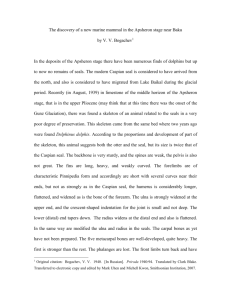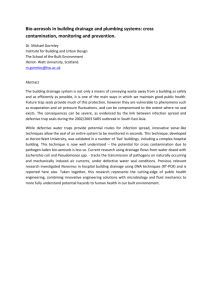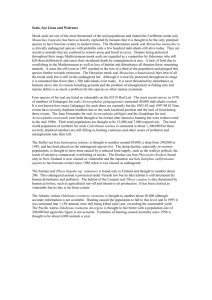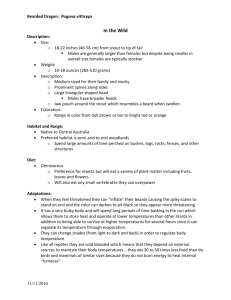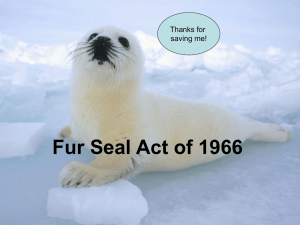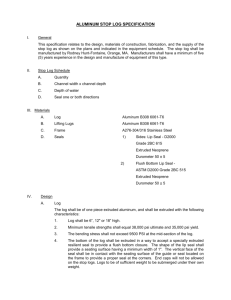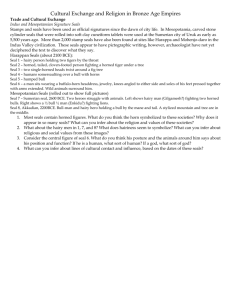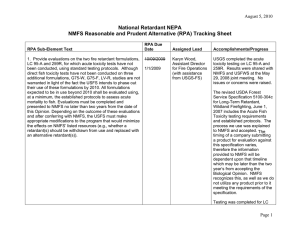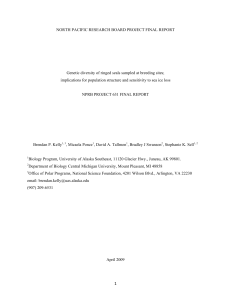AOGA Testimony to BOEMRE on Ringed
advertisement
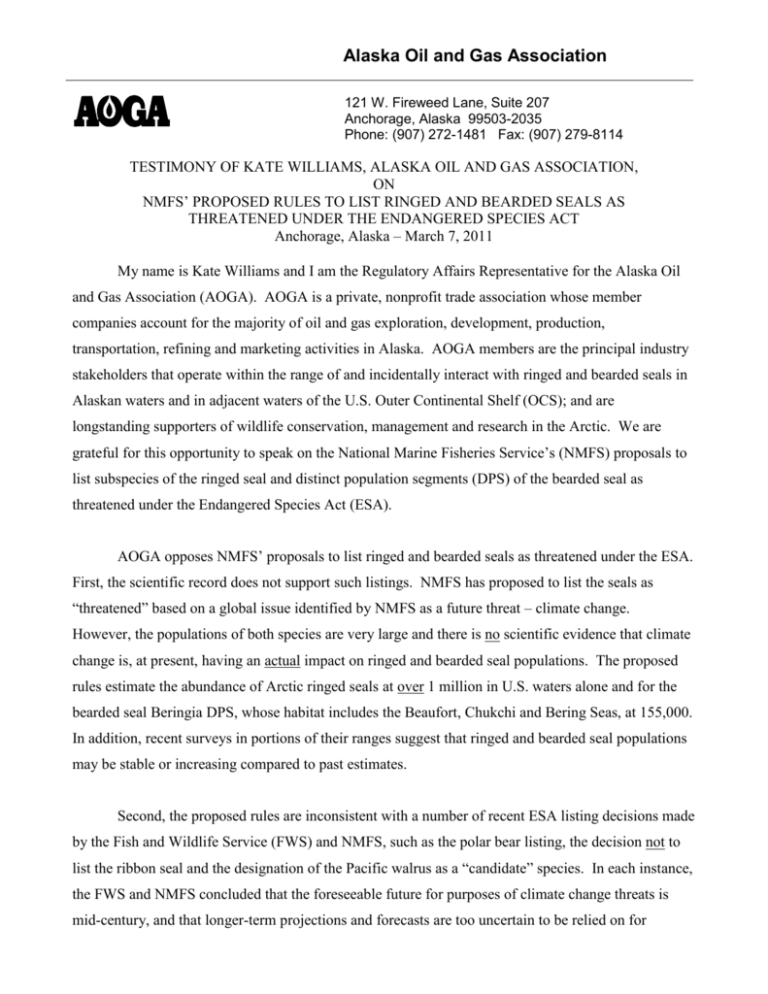
Alaska Oil and Gas Association 121 W. Fireweed Lane, Suite 207 Anchorage, Alaska 99503-2035 Phone: (907) 272-1481 Fax: (907) 279-8114 TESTIMONY OF KATE WILLIAMS, ALASKA OIL AND GAS ASSOCIATION, ON NMFS’ PROPOSED RULES TO LIST RINGED AND BEARDED SEALS AS THREATENED UNDER THE ENDANGERED SPECIES ACT Anchorage, Alaska – March 7, 2011 My name is Kate Williams and I am the Regulatory Affairs Representative for the Alaska Oil and Gas Association (AOGA). AOGA is a private, nonprofit trade association whose member companies account for the majority of oil and gas exploration, development, production, transportation, refining and marketing activities in Alaska. AOGA members are the principal industry stakeholders that operate within the range of and incidentally interact with ringed and bearded seals in Alaskan waters and in adjacent waters of the U.S. Outer Continental Shelf (OCS); and are longstanding supporters of wildlife conservation, management and research in the Arctic. We are grateful for this opportunity to speak on the National Marine Fisheries Service’s (NMFS) proposals to list subspecies of the ringed seal and distinct population segments (DPS) of the bearded seal as threatened under the Endangered Species Act (ESA). AOGA opposes NMFS’ proposals to list ringed and bearded seals as threatened under the ESA. First, the scientific record does not support such listings. NMFS has proposed to list the seals as “threatened” based on a global issue identified by NMFS as a future threat – climate change. However, the populations of both species are very large and there is no scientific evidence that climate change is, at present, having an actual impact on ringed and bearded seal populations. The proposed rules estimate the abundance of Arctic ringed seals at over 1 million in U.S. waters alone and for the bearded seal Beringia DPS, whose habitat includes the Beaufort, Chukchi and Bering Seas, at 155,000. In addition, recent surveys in portions of their ranges suggest that ringed and bearded seal populations may be stable or increasing compared to past estimates. Second, the proposed rules are inconsistent with a number of recent ESA listing decisions made by the Fish and Wildlife Service (FWS) and NMFS, such as the polar bear listing, the decision not to list the ribbon seal and the designation of the Pacific walrus as a “candidate” species. In each instance, the FWS and NMFS concluded that the foreseeable future for purposes of climate change threats is mid-century, and that longer-term projections and forecasts are too uncertain to be relied on for Page 2 purposes of ESA listings. Climate predictions extending out 100 years, and specific to the Arctic, as NMFS relied on in the proposed rules for ringed and bearded seals, far exceed the reliability of climate models and forecasts. Although determination of the foreseeable future may differ among species subject to different threats based on different data, there is no rational or scientific basis to use a different foreseeable future where, as here, the species are dependent upon the same sea ice habitat, subject to the same threat – sea ice declines due to climate change – and the data used by NMFS is the same. Utilizing the proper foreseeable future – mid-century – the ringed seal subspecies and bearded seal DPSs do not qualify as “threatened” under the ESA. Finally, as NMFS concluded in the proposed rules, oil and gas exploration, development and production are not a threat to ringed and bearded seals. The oil and gas industry has been operating in the Alaskan Arctic Ocean and adjacent shoreline for over 30 years with no more than a negligible impact on ice seals, or other marine mammals. The effects of oil and gas activities in these areas are well-studied; and the documented impacts to seals from such activities are limited to short-term, temporary effects that have no long-term effects on individual seals and no detectable or expected effects on seal populations. Additionally, existing regulatory mechanisms, including those established under the Marine Mammal Protection Act (MMPA) have been effective in managing the potential for adverse impacts to marine mammal species, including seals, from oil and gas activities. In conclusion, the proposed “threatened” listings are not warranted because (1) ringed and bearded seals are currently healthy and very abundant, particularly the Arctic subspecies of the ringed seal and Beringia DPS of the bearded seal and (2) NMFS’ use of a 100-year foreseeable future to forecast population decline is inconsistent with recent listing decisions for other Arctic species and exceeds the reliability of climate models and forecasts. Furthermore, oil and gas activities have been occurring in seal habitat for decades without any detectable adverse impact to ringed or bearded seal survival, abundance or health. AOGA thanks NMFS for this opportunity to comment on its proposals to list subspecies of ringed seals and DPSs of bearded seals as “threatened” under the ESA. NMFS’ review and serious consideration of AOGA’s comments is sincerely appreciated. We will be submitting more detailed written comments by the March 25 deadline.
